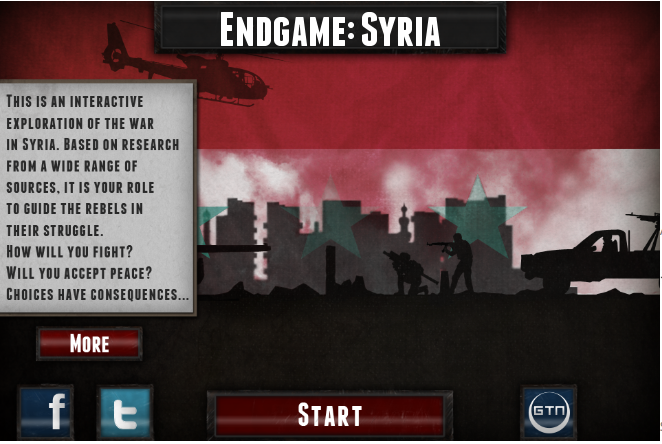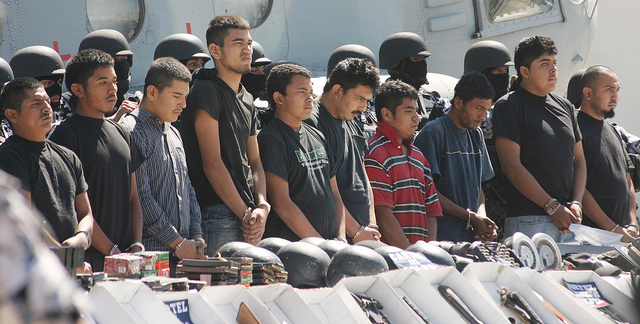Guest post by Evan Perkoski and Alec Worsnop

On June 10th, the armed group known as the Islamic State of Iraq and al-Sham (ISIS) captured Iraq’s second largest city, Mosul, with an estimated population of 1.8 million people. Reports suggest that over 500,000 have already fled the city and Prime Minister Nouri al-Maliki has asked parliament to declare a state of emergency to help deal with the ongoing threat. Although ISIS has controlled large swaths of northwestern Iraq and eastern Syria for months, their encroachment on Baghdad combined with the crumbling Iraqi resistance has aroused the concern of the international community.
ISIS originated as Tawhid and Jihad, a militant group formed by Abu Musab al-Zarqawi in the wake of the 2003 US invasion of Iraq. A year later, al-Zarqawi pledged his group’s allegiance to al-Qaeda (AQ), and Tawhid and Jihad subsequently became known as al-Qaeda in Iraq (AQI). AQI, composed mainly of Sunni foreign fighters who travelled to Iraq from nearby countries including Egypt, Saudi Arabia, Libya, Syria, Algeria, and Yemen, quickly developed a reputation of being especially radical and violent. Following al-Zarqawi’s death in 2006, his successors Abu Omar al-Baghdadi and Abu Ayyub al-Masri sought to create a more Iraqi face for the organization: they transitioned northwards, co-opting Iraqi nationalists and other Sunni insurgent groups along the way, and ultimately created an umbrella organization known as the Islamic State of Iraq (ISI). Their steady progress was only checked in mid-2007 by the US Surge and the Sunni Awakening, when a number of tribal groups flipped sides and joined the US.
Although AQI/ISI was badly damaged, it continued to carry out operations and it managed to survive the deaths of both al-Baghdadi and al-Masri in 2010. Following the US withdrawal from Iraq at the end of 2011, the group picked up the tempo of attacks and began expanding operations beyond Iraqi borders. In particular, Abu Bakr al-Baghdadi, who assumed leadership in 2010, was instrumental in the decision to move into Syria and to re-brand the organization as the Islamic State of Iraq and al-Sham. He also cultivated ties with the al-Nusra Front – the main AQ affiliate in Syria – that is widely seen as more moderate and more home-grown than ISIS. Notwithstanding these ties, ISIS and al-Nusra have repeatedly clashed. While al-Nusra is focused on overthrowing Assad, ISIS is more interested in establishing its own territory and installing a strict Islamic regime, which has made it hard to gain widespread support.
There are several aspects of this story that political science research can speak to. First, ISIS demonstrates the importance of safe havens and rear bases to violent nonstate actors. Analyses of many irregular conflicts find that rear bases provide organizations space to re-group, time to train new soldiers, and access to supplies and weaponry, all of which makes it easier to keep fighting. Just as the Taliban were bolstered by their ability to retreat from Afghanistan into Pakistan, the cover of the Syrian civil war provides a similar benefit to ISIS. With no end in sight to the conflict in Syria, it is hard to imagine how this situation can be resolved.
Second, contrary to many media reports, ISIS is not a splinter group of AQ. ISIS wasn’t founded by or ever directly a part of AQ; rather, they were affiliates, two groups with close bonds, with one pledging loyalty to the other though at all times maintaining autonomy. This is an important distinction since labeling ISIS a splinter implies AQ factionalism that in reality never existed. Instead, ISIS’s links with AQ, rather than signaling weakness or factionalism, have played a major role in their development by providing access to resources, strategic and tactical guidance, recruits, and an ideology that helped socialize and bind together individuals from disparate backgrounds.
Third, the previous two points help to illustrate why defeating ISIS is going to be difficult. While many have been quick to point out ISIS’ unpopularity as a major weakness, research suggests that well-organized groups capable of force generation and complex military activities can be quite successful and hold territory even if they can’t draw on strong community ties or widespread public support. Indeed, while the Sunni Awakening and the Surge undermined AQI in 2007, their institutionalization and organizational integrity allowed them to make significant progress from 2004 to mid-2007 despite a dearth of public support. In this context, the military capacity of ISIS can be strongly juxtaposed with the weakness of the Iraqi Army and Police, many of whom simply abandoned their posts and equipment as ISIS approached. It is this imbalance that most explains the current situation in Iraq.
Fourth, though some groups, such as ISIS, the Taliban, and Hezbollah, are far more capable than others, they are often lumped together as “terrorists” or “rebels” and treated as analytically equivalent to short-lived and one-off groups elsewhere. ISIS illustrates the importance of carefully disaggregating insurgent and terrorist groups based on their structural conditions and organizational characteristics. It is unlike traditional terrorist groups: ISIS took Mosul and Tikrit with direct force, they command upwards of 10,000 militants (by some estimates), and they control broad areas of Iraq and Syria. They are even trying to act like a governing body: as a recent BBC report suggests, “militants [in Mosul] have been travelling around the city telling them they are not in danger – even the Shia residents – and that people should go back to work.” Political scientists should leverage these types of organizational characteristics to more effectively distinguish between different types of nonstate actors.
Overall, existing research suggests that the outcome of the conflict with ISIS will be decided by more than just the actions of the Iraqi government. ISIS’ continued access to Syrian territory, its resilience and organizational strength, its military capacity, and the weakness of the Iraqi state will complicate any and all Iraqi efforts at reclaiming their territory. Although US and NATO allies will keep a close eye on the situation, their war-weary publics are likely to resist any calls for foreign assistance, placing the burden on Iraq to reform their security forces and mount a renewed offensive against a group that is increasingly threatening the nation’s capital.
Evan Perkoski is a PhD Candidate at the University of Pennsylvania and a Research Fellow at the Belfer Center for Science and International Affairs. His dissertation examines the effects of militant fragmentation and the formation of splinter organizations.
Alec Worsnop is a Ph.D. candidate in political science at the Massachusetts Institute of Technology where he is an affiliate of the Security Studies Program. His dissertation examines the determinants of insurgent military effectiveness.






2 comments
Certain kinds of political analysis would be improved by expunging propagandistic notions from the vocabulary. Among these are ‘terror’ and ‘terrorism’, which has been used mainly as a term of abuse in recent years. Terrorism is not a group or an ideology, it is a set of methods for waging war — one appropriate to weak actors. When the actors become stronger, they adopt other methods, like guerrilla or conventional large-unit warfare. Thus it is not at all surprising that ISIS, moving into the political near-vacuum created by the U.S. adventure in Iraq with a certain amount of success, was able to shift itself across that spectrum.
Mr. Rodriguez’s advice is worthy but there is a need to make one point emphatically. Terrorism is not exclusively appropriate to weak actors. Terrorism is a method used by many state of varying strengths. In fact, state terrorism is more pernicious than non-state because a state’s resources are more consistently potent and more efficacious. Thus, non-state/sub-state groups that capture the state often bring terrorism with them into the halls of government. (Think specifically of Nazi Germany, Stalin’s Soviet Union, and other such regimes that used terrorism as a tool of statecraft).
Also, concerning the blog: it is common mistake calling al-Nusra Front a “moderate” jihadist group. This is a contradiction in terms as no jihadist group follows or espouses moderation, except in military terms (i.e. conservation of tactical and strategic assets). Jihadism is patently extremist, predicated on uncompromising but militarily practical use of means to achieve its proximate and ultimate goals. The mistake is often made because analysts see the proximate goals (destroying an “apostate” regime) as a primary goal.
Furthermore, this mistake is interconnected with the issue of “targeting.” Al-Nusra, ISIS, the Afghan and Pakistani Talibans, and a panoply of other groups target the “near enemy,” i.e. Muslim “apostate” governments or non-Muslim regimes, in contrast to al-Qaeda “Central.” However, all jihadist rhetoric and internal debate conceives of this division as a matter of strategic choice (see Fawad Gerghiz “The Far Enemy”). Keep in mind that if various jihadist groups were able to achieve their proximate goals, total unity would become easier and more desirable, even if not entirely achievable. (David Cook’s book about Islamic eschatology would be an important text to help characterize this further).